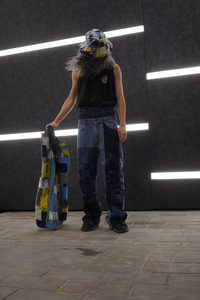Revolutionising Fashion: Upcycling and Repurposing
- PrintTrend studio

- Jul 15, 2023
- 2 min read
In a world of disposable fashion and fleeting trends, it's easy to see how our buying habits have become a significant contributor to environmental degradation. However, two terms are consistently making rounds in the fashion industry, promising a more sustainable future: upcycling and repurposing. Let's unravel these intriguing concepts and understand their role in fostering sustainable fashion practices.
Before diving into the heart of the matter, it's essential to understand what upcycling and repurposing mean. Upcycling, often referred to as creative reuse, is the process of transforming by-products, waste materials, or unwanted items into new materials or products perceived to be of greater quality or environmental value. Repurposing, on the other hand, involves reusing an item in a different way than initially intended, without significantly altering its original form. Think of converting old denim jeans into tote bags or transforming vintage silk scarves into vibrant cushion covers.
You may also be interested in New technologies in print design or Smart Textiles.
The Magic of Upcycling and The Power of Repurposing
Upcycling in fashion presents a myriad of opportunities. By reimagining and reworking discarded materials or unsold stock into new, desirable pieces, designers can minimise waste and extend the lifecycle of fabrics. The beauty of upcycling lies in its creativity. Every upcycled piece is unique, crafted from materials with their history and character. The result? A piece of clothing that not only looks good but also tells a compelling story of its transformation.
When it comes to repurposing, the idea is to extend the usefulness of an item beyond its original purpose. Repurposing old clothes not only reduces waste but also offers an opportunity to create something unique and personal. From repurposing old t-shirts into stylish headbands to transforming outdated dresses into fashionable skirts, repurposing offers countless ways to refresh your wardrobe without resorting to the fast-fashion cycle.
The incorporation of upcycling and repurposing in the fashion industry reflects a fundamental shift in how we approach production and consumption. The fashion industry is notorious for its significant environmental footprint. Upcycling and repurposing directly challenge this issue by reducing demand for new materials, hence minimising waste, energy consumption, and carbon emissions associated with fabric production. Upcycling and repurposing are cornerstones of a circular economy, where resources are kept in use for as long as possible. By giving new life to discarded or underused materials, these practices disrupt the traditional 'take-make-dispose' model, paving the way for a more sustainable fashion industry.
Beyond the environmental benefits, upcycling and repurposing also promote creativity and individuality. They allow designers to break free from mass production and consumers to own unique, meaningful pieces.
The role of upcycling and repurposing in sustainable fashion practices cannot be overstated. They embody a vision of fashion that is respectful to our environment and resources, encouraging mindful consumption and creativity. By adopting these practices, we can all play a part in transforming the fashion industry for the better.










Comments